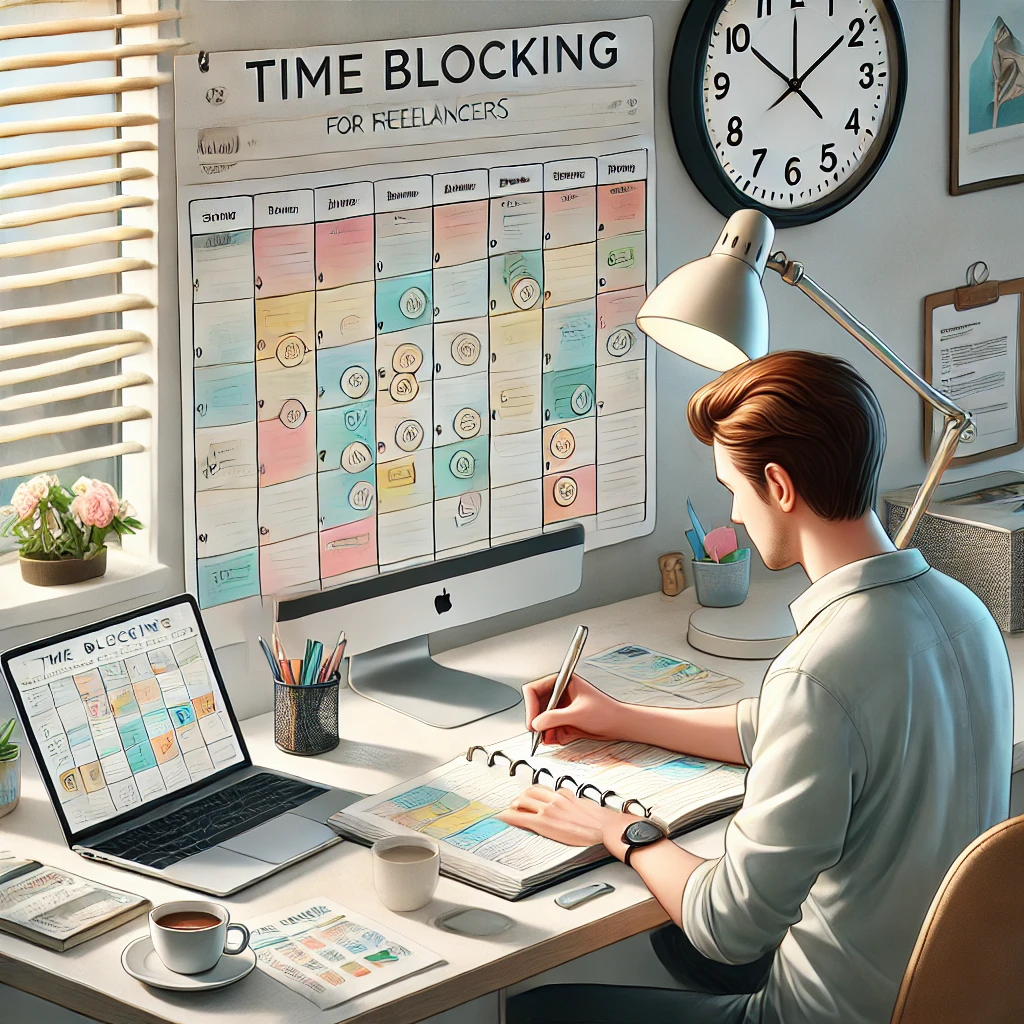Ever feel like there just aren’t enough hours in the day? As a freelancer, juggling multiple projects, client calls, and personal commitments can feel overwhelming. That’s where time blocking comes in—a powerful technique to take control of your schedule and maximize productivity.
Time blocking is more than just penciling tasks into a calendar. It’s about assigning specific chunks of time to specific activities. Let’s dive into how freelancers can leverage this strategy to create more structure and balance in their workdays.
Understanding Time Blocking
The Basics of Time Blocking
At its core, time blocking involves dividing your day into blocks of time dedicated to specific tasks. Unlike a to-do list, where tasks can pile up without structure, time blocking gives every task a designated slot.
How It Differs from a To-Do List
While a to-do list is simply a collection of tasks, time blocking integrates those tasks into your schedule. It’s like upgrading from a rough draft to a polished manuscript. Time blocking forces you to allocate resources—your time—to what matters most.
Benefits of Time Blocking for Freelancers
Increased Productivity
By focusing on one task at a time, you eliminate multitasking, which is often counterproductive. Time blocking helps you stay laser-focused.
Reduced Procrastination
When you know exactly what you should be doing at any given moment, there’s less room for procrastination. It’s a simple way to keep distractions at bay.
Improved Work-Life Balance
Freelancers often struggle with defining work hours. Time blocking ensures you allocate time for personal activities, making it easier to step away from work guilt-free.

Getting Started with Time Blocking
Assess Your Daily Schedule
Start by tracking how you currently spend your time. This step helps you identify inefficiencies and opportunities for improvement.
Identify Your Priorities
Determine your most important tasks. Focus on client work, personal projects, and areas where your time delivers the highest value.
Key Components of Effective Time Blocking
The Importance of Setting Boundaries
Let clients know your working hours and stick to them. This helps you avoid late-night requests and burnout.
Using Time Blocking Tools and Apps
Apps like Google Calendar, Notion, or TimeCamp can streamline your time-blocking efforts. Experiment to find what works best for you.
How to Structure Your Day with Time Blocking
Planning Work Sessions
Divide your day into focused work sessions, each lasting 1–2 hours. Include buffers for flexibility.
Scheduling Breaks
Breaks aren’t optional—they’re essential. Use techniques like the Pomodoro Technique to alternate between work and rest.
Allocating Time for Admin Tasks
Don’t forget to set aside time for emails, invoicing, and other admin duties. These tasks are often overlooked but essential.
Common Mistakes to Avoid
Over-Scheduling
Avoid filling every minute of your day. Leave some open space for spontaneity and unexpected tasks.
Ignoring Flexibility
Life happens. Build flexibility into your schedule to adapt to sudden changes.
Advanced Time Blocking Techniques
Theme Days
Dedicate entire days to specific activities. For example, reserve Mondays for client meetings and Wednesdays for creative work.
Task Batching
Group similar tasks together. For instance, handle all emails and phone calls in one dedicated block.
Overcoming Challenges in Time Blocking
Managing Interruptions
Freelancers face constant interruptions. Use strategies like setting “do not disturb” hours or using noise-canceling headphones.
Staying Consistent
Consistency is key. Review your schedule daily and make adjustments as needed.
Balancing Work and Personal Life
Incorporating Self-Care
Schedule time for exercise, hobbies, and relaxation. Remember, a well-rested freelancer is a productive freelancer.
Creating Buffers
Leave gaps between tasks to prevent back-to-back stress. These buffers are lifesavers when things run over time.
Best Tools for Time Blocking
Apps and Software Recommendations
Tools like Asana, Trello, and Clockify can elevate your time-blocking game. If you prefer analog, a simple planner works too.
Analog Options for Traditionalists
Sometimes, pen and paper are all you need. Consider a planner with a daily time grid.
Real-Life Examples of Time Blocking for Freelancers
Sample Daily Schedules
For a freelance writer:
9:00–11:00 AM: Writing client articles
11:00–11:30 AM: Break
11:30 AM–1:00 PM: Research
1:00–2:00 PM: Lunch
2:00–3:30 PM: Administrative tasks
3:30–5:00 PM: Personal projects
Time Blocking for Different Freelance Careers
Writers
Focus blocks on writing, editing, and brainstorming.
Designers
Dedicate time to client revisions, creative brainstorming, and feedback.
Consultants
Reserve blocks for calls, research, and proposal writing.
How to Stay Motivated with Time Blocking
Setting Goals
Tie time blocks to specific goals. For instance, “Complete draft 1 of client project by 11:00 AM.”
Tracking Progress
Review how well you stuck to your schedule. Adjust as needed.
Conclusion and Final Thoughts
Time blocking is more than just a productivity hack—it’s a lifestyle upgrade. By being intentional with your time, you can create a balanced, fulfilling freelance career. Start small, experiment, and watch your productivity soar.
FAQs
What is the best time-blocking app?
Google Calendar is a favorite for its simplicity, but Notion offers customization for advanced users.
Can time blocking work for part-time freelancers?
Absolutely! Even small blocks of focused time can make a huge difference.
How do I handle unexpected tasks?
Use buffer time or reschedule less urgent tasks to accommodate surprises.
How long does it take to master time blocking?
With consistent practice, most freelancers get the hang of it within a few weeks.
Is time blocking suitable for creative professionals?
Yes! Creative work thrives on structure, and time blocking helps you find the right balance.

